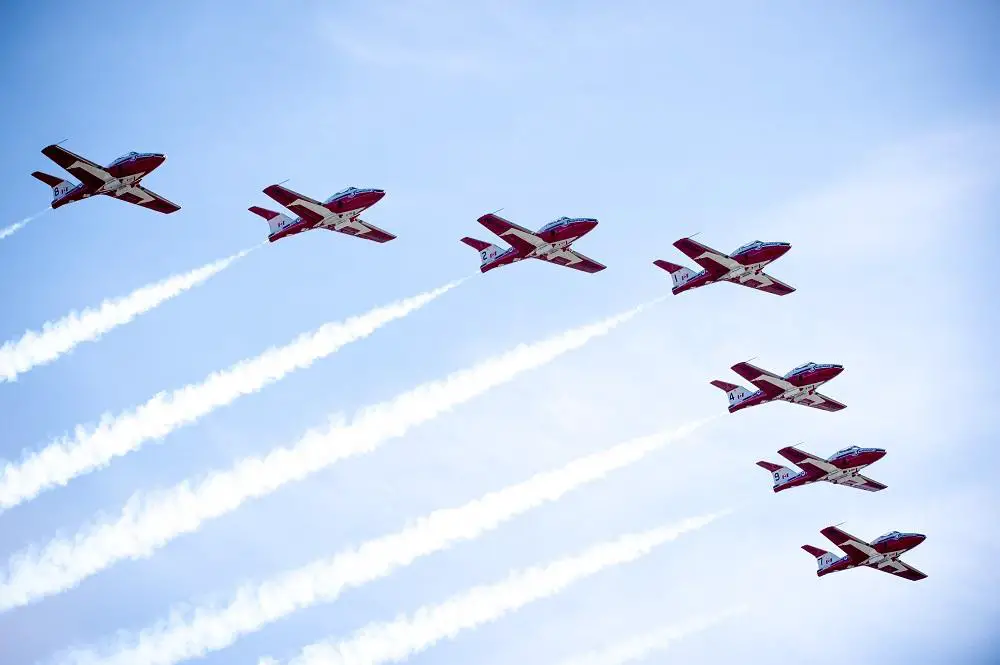The Royal Canadian Air Force (RCAF) fleet of 11 Canadair CT-114 Tutor jets flown by the Snowbirds display team in 431 Air Demonstration Squadron has been placed on ‘operational pause’. The Canadian Department of National Defence announced on 10 August that the RCAF Operational Airworthiness Authority implemented the grounding and ‘will conduct a deliberate, detailed and broad risk analysis, with the aim of enabling the safe resumption of CT-114 flying operations’ once an operational airworthiness risk assessment is completed. The cause of the accident on 2 August in which nobody was injured after the CT-114 crashed after take-off from Fort St John — remains under investigation by the RCAF’s Directorate of Flight Safety.
The Canadair CT-114 Tutor (company model CL-41) was the Royal Canadian Air Force (RCAF), and later Canadian Forces, standard jet trainer between the early 1960s and 2000. It was designed and produced by Canadian aircraft manufacturer Canadair. Development commenced as a private venture by the company. On 13 January 1960, the prototype performed its maiden flight; a year and a half later, the Canadian Government placed a major order for the type. The RCAF would be the dominant user of the type, but a limited number were exported as well. Specifically, the CL-41G model, which was supplied to the Royal Malaysian Air Force (RMAF), served as a ground-attack aircraft up until its withdrawal.

The CT-114 Tutor is a single-engine turbojet-powered trainer aircraft. It was purpose-designed for the training role, and possesses numerous favourable qualities, including a high level of reliability and favourable operating economics. It is capable of a wide performance range, possessing a top speed at altitude of 795 kmh (429 kt) and a diving speed of 885 kmh (478 kt) against a relatively low stalling speed of 71kt. The Tutor is furnished with manual flight controls, which incorporate spring tabs. It is intentionally aerodynamically stable in flight, a factor which traditionally has aided in the training of fresh pilots unfamiliar with the demands of flight. The Tutor features a side-by-side cockpit.
Following experiences with the Snowbirds display team, a number of aircraft were reconfigured with extra controls so that they would be flyable from either position. The cabin, which is fitted with a rear-hinged canopy over both crew members, can be pressurized to a differential of 3 psi (20 kPa), the equivalent to an altitude of about 2,000 m, for pilot comfort. For aerial display purposes, the Tutor was readily capable of being fitted with a smoke generator, including a pair of under-fuselage pods to house the pressurized diesel fuel used; the use of red dye in the smoke was discontinued fairly quickly as it was found to be highly corrosive. Various other modifications would also be made to display aircraft; these could be routinely installed and uninstalled as airframes would regularly be exchanged between display and training flights.












